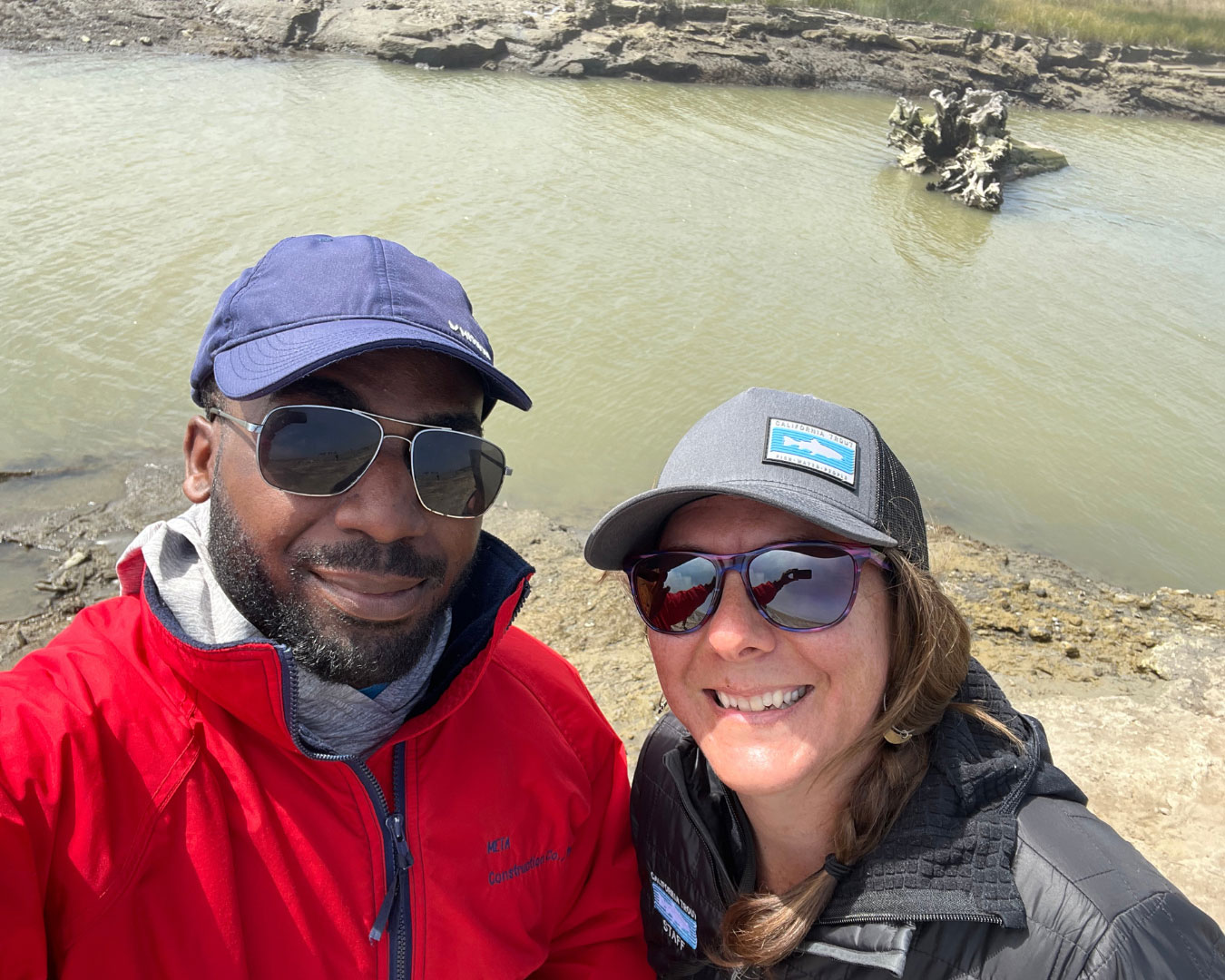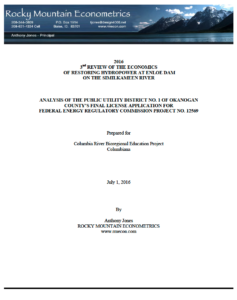Collaborative Efforts to Restore the Eel River Estuary
Written by Will Ware, CalTrout Bay Area Project Coordinator
Winding across northern California, the Wild and Scenic (and endangered!) Eel River drains the state’s third largest watershed as it emerges from its headwaters in the Coast Range, snakes through steep canyons and old growth redwoods, and joins the Pacific Ocean south of Humboldt Bay. California Trout’s North Coast Region leads several projects in the watershed that complement projects led by other organizations. Join us on restoration project tours across the Eel River Estuary with our Mount Lassen Project Manager, Holly Swan, and our Bay Area Project Coordinator, Will Ware at this year’s Salmonid Restoration Federation conference.
Mist breezes onshore as waves crash beyond billowing sand dunes blockading water that slowly flows through the marsh. We are overlooking the estuary on the edge of Table Bluff where a patchwork of colors shows a centuries-long plant drama continuing as the non-native cordgrass (Spartina densiflora) imported from South America invades native pickleweed (Sarcocornia pacifica) patches in the marsh while introduced European beach grass (Ammophilaarenaria) has become established the dunes. Similar to the plants, the Wiyot or ”Eel River Tribe” are re-rooting in their ancestral lands on Table Bluff and the surrounding area. The tribe supports restoration projects by growing native plants in their demonstration garden to reclaim soil formerly colonized by introduced plants.
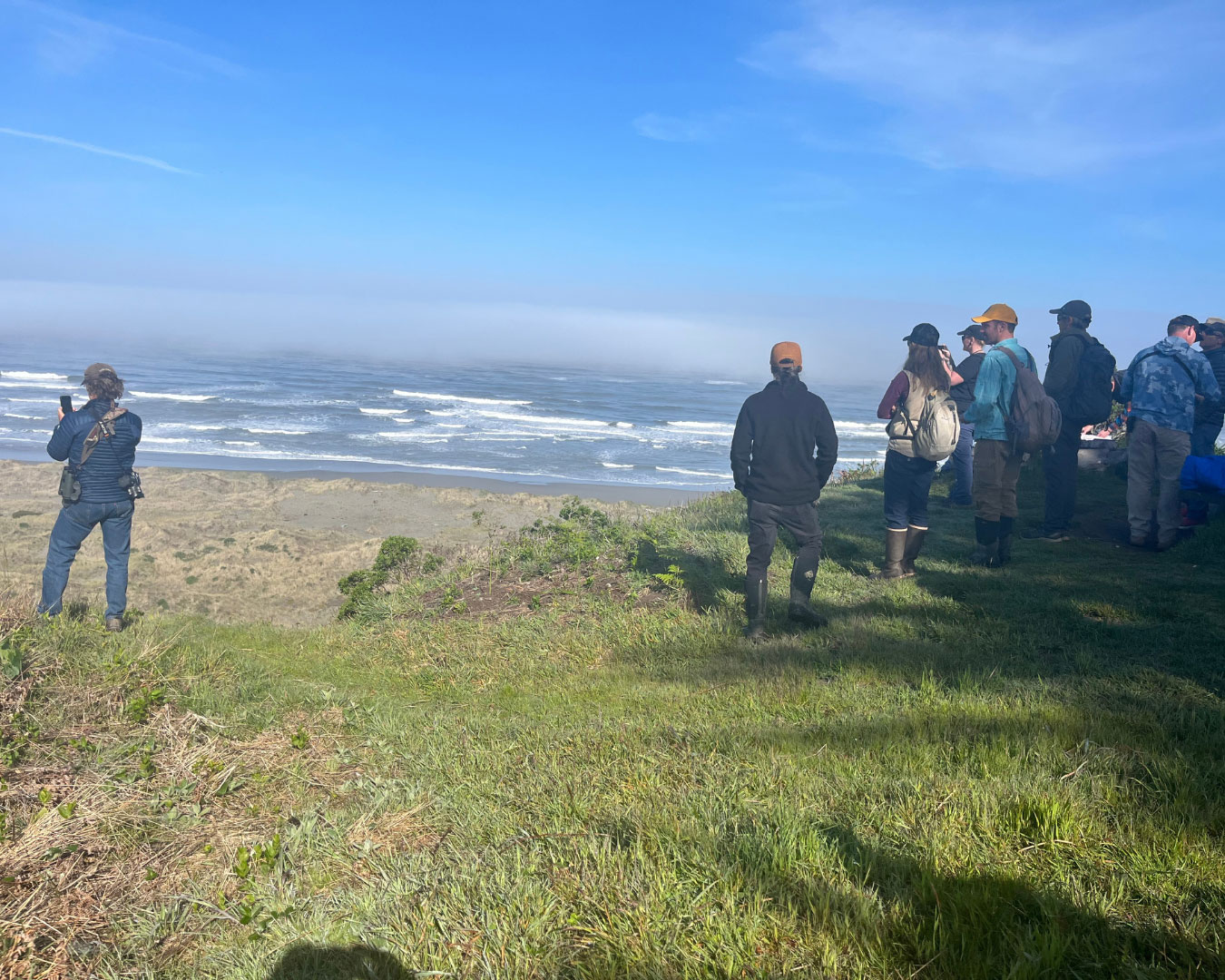
3 Projects, 1 Estuary
Ocean Ranch Restoration Project
The California Department of Fish & Wildlife (CDFW) is using $6.5 million dollars from the NOAA Restoration Center, U.S. Fish & Wildlife Service, State Coastal Conservancy, and Wildlife Conservation Board to restore the 850-acre Ocean Ranch Unit within CDFW’s 2,600 acre Eel River Wildlife Area in collaboration with Ducks Unlimited (DU). The Ocean Ranch Restoration Project has two overarching goals: enlarge the tidal prism of the marsh and remove non-native plants. A tidal prism is the total amount of water flowing in and out of the estuary in daily tidal cycles. The prism shrank as the flowing waters were funneled into levied channels for agricultural development and duck hunting ponds. The shrinking prism reduced feeding habitat for threatened Southern Oregon/Northern California Coast coho salmon (Oncorhynchus kisutch), threatened California Coastal Chinook salmon (O. tshawytscha), threatened Northern California steelhead trout (O. mykiss), and ocean-going coastal cutthroat trout (O. clarkii clarkii) while also decreasing year-round habitat for endangered tidewater goby (Eucyclogobius newberryi). Meanwhile, cordgrass slows the transformation of mudflats into marsh habitat for fish and birds as the plant binds sediment and crowds out others.
The two-pronged restoration approach is addressing this problem. CDFW and DU are increasing the tidal prism by (1) lowering key levies throughout the marsh to increase freshwater flow and mixing with the ocean, (2) building and maintaining “goby shelves” where sediment naturally stacks to create shallow water burrowing and nesting habitat for these fish during incoming tides, (3) creating deep-water channels for other fish to use across the tidal cycle, (4) maintaining 6-7 foot high ridges for native plants to grow higher up in the marsh, and (5) lowering the levy by the mouth of the Eel River so that large wood washing downstream does not stack up there.
CDFW is also working with partners, like the California Department of Forestry & Fire Protection (CAL Fire), to remove non-native plants in the estuary. They are using multiple techniques such as (1) controlled burns of European beach grass on dunes so that the piles of sand are free to move with changing coastal conditions, (2) Imazapyr herbicide applications to selectively kill cordgrass, (3) removal of dead cordgrass with amphibious vehicles called Marsh Masters, and (4) shredding of rhizomes or underground stems with mechanical grinders. CDFW has been monitoring fish communities in marsh channels at Ocean Ranch with seine nets, boats, and traps for five years, with help from the Wiyot Tribe, to provide results for before, during, and after the restoration project. They found tidewater goby using two goby shelves and coho using channels from late winter to spring while capturing other fish at the interior (e.g., three-spine stickleback, smelt) and exterior (e.g., surfperch) portions of the marsh shortly after it reopened to the Pacific Ocean.
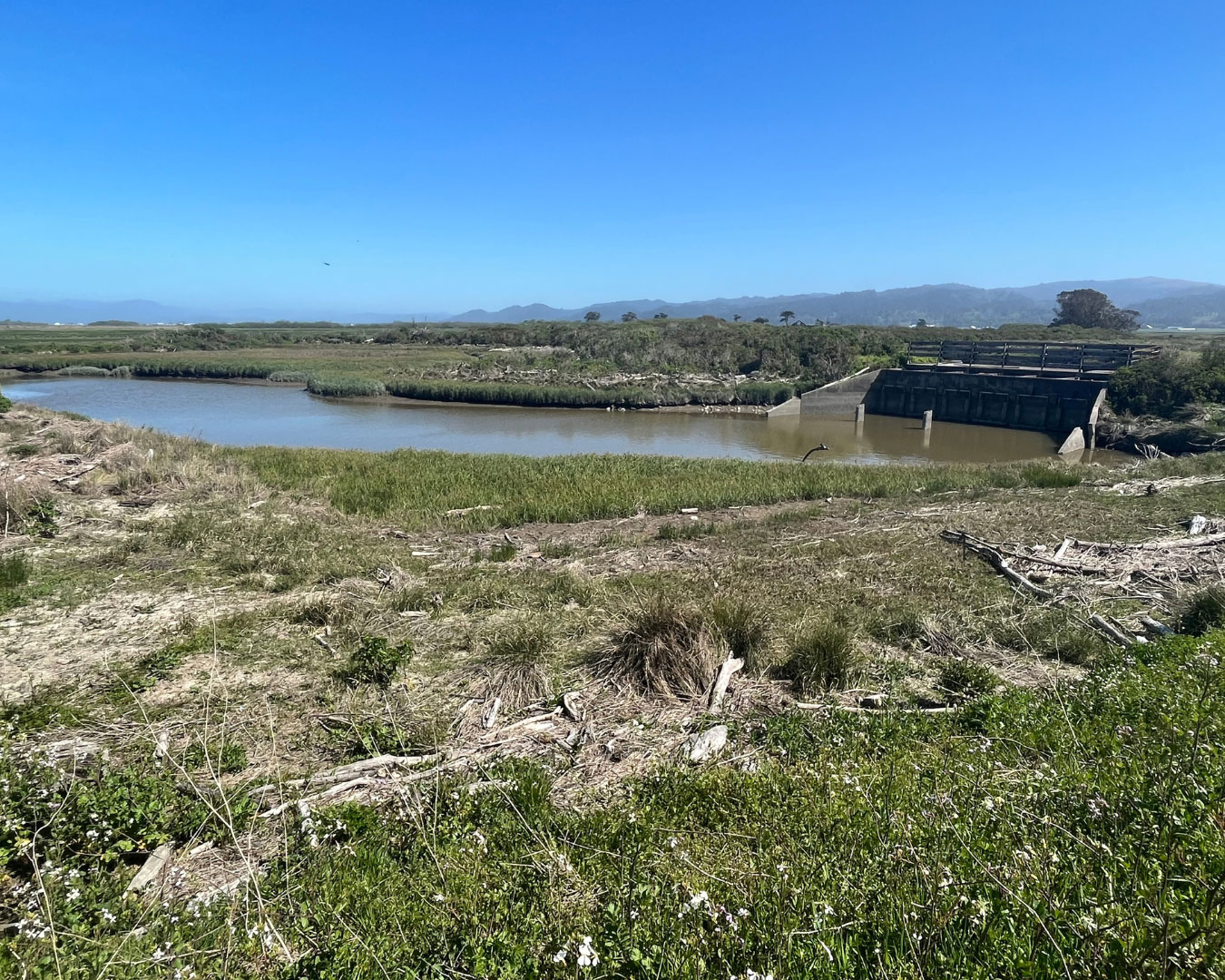
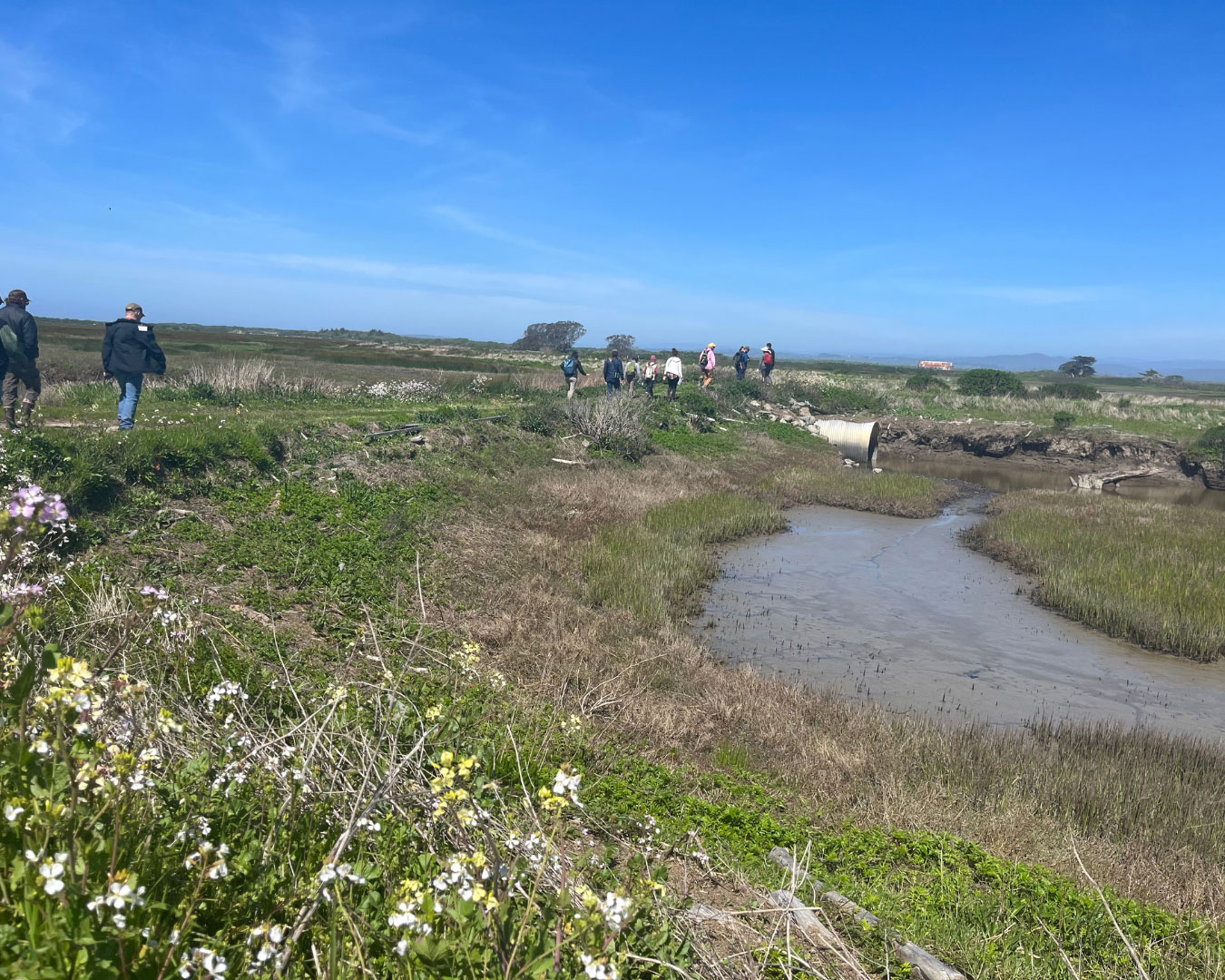
Russ Creek & Centerville Slough Restoration Project
Restoration of tidal flow through marshes in the southern portion of the Eel River Estuary increases food-rich habitat available for juvenile coho salmon, Chinook salmon, steelhead, and ocean-going cutthroat alongside other migratory and resident species. Similar to other coastal sites, estuarine habitat has been degraded by a variety of factors like sediment runoff from the surrounding Wildcat Mountains, levying marsh channels, and introduced plants. This is why the Humboldt County Resource Conservation District, U.S. Fish & Wildlife Service, Natural Resources Conservation Service, GHD, and Michael Love & Associates are all working to use natural processes to restore and enhance a variety of habitats. Planned work by the agencies and consultants include (1) lowering nearly 3,000 feet of levies to bring the full tidal cycle back to approximately five hundred acres of estuarine habitat and recover four miles of Centerville Slough, (2) dredging and realigning 1,500 feet of the Russ Creek channel with its historic pathway, (3) creating berms that build new sand dunes as waves wash sand from current dunes, (4) removing cordgrass, and (5) improving public access into the estuary.
Cannibal Island Restoration Project
At CalTrout, we are using CDFW Watershed Restoration Grant program funds to prepare engineering design and begin permitting to restore 950 acres of levied salt marsh in the Cannibal Island Unit of the Eel River Wildlife Area into both natural and pasture habitats on this working landscape. This project near the river mouth lies in the heart of the estuary. We are focused on bringing back the seasonal shifts between freshwater and brackish ecosystems in the marsh while collaborating with partners to apply our Aquatic Species Assessment Tool to the estuary. We developed a prototype interactive data interface with the Olson Lab at the California State University at Monterey Bay that we can refine and replicate elsewhere.
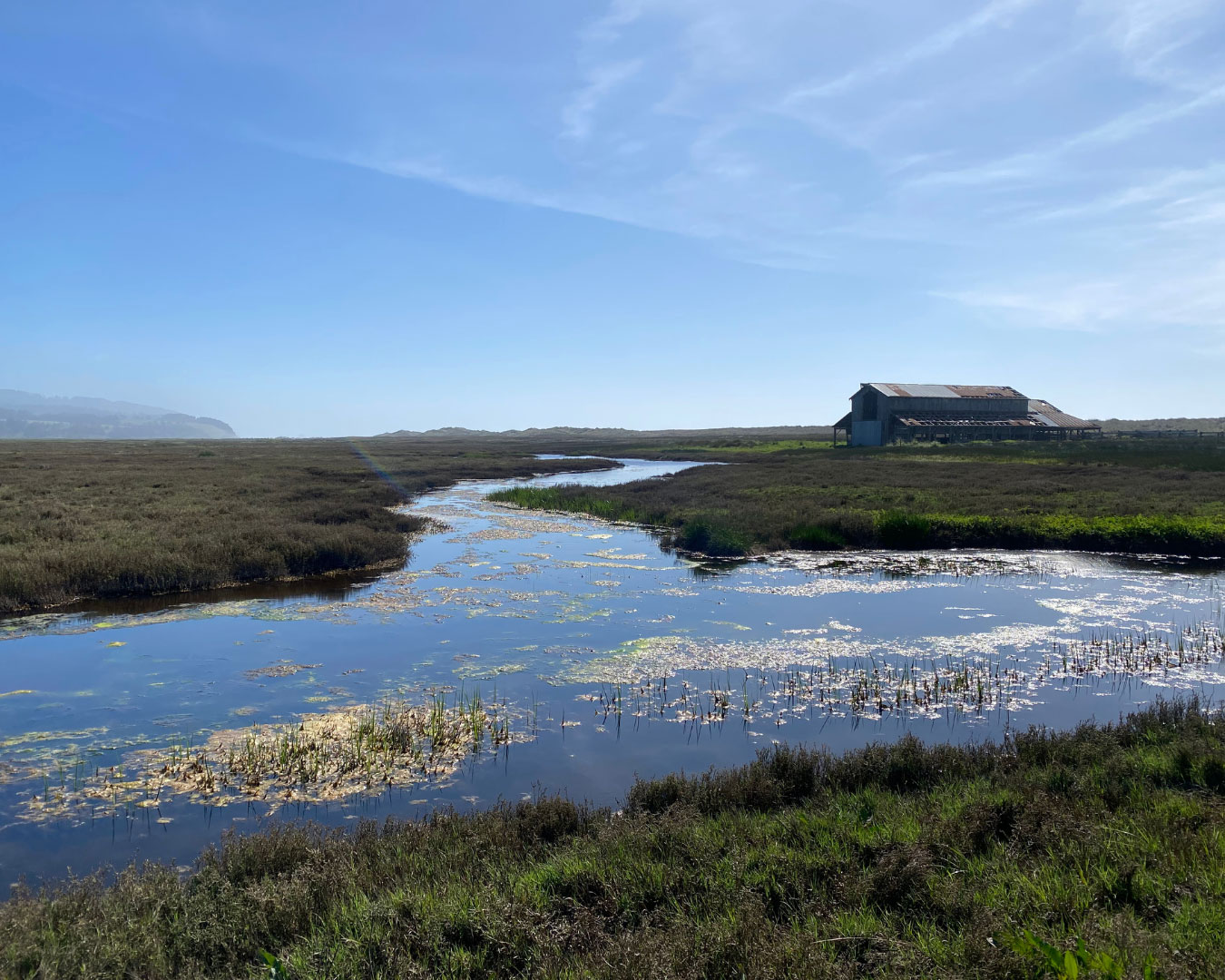
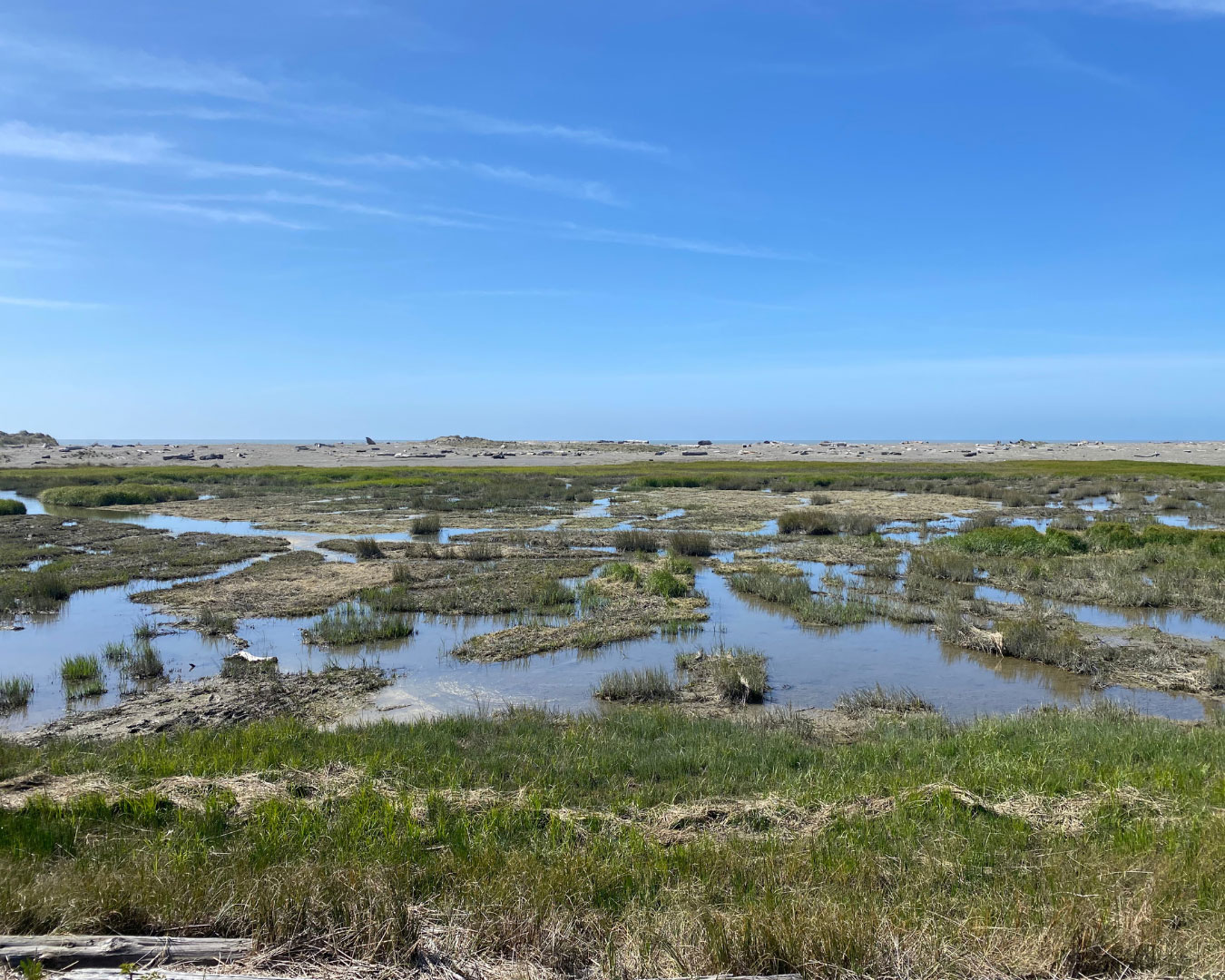
Watershed-Wide Conservation Planning
CalTrout’s North Coast region is working on projects that span the current extent of anadromy along the Eel River, not just the estuary. We lead the Eel River Forum which brings together tribes, federal and state agencies, other non-profit organizations to advance ecosystem protection alongside salmon and steelhead recovery according to our co-developed Eel River Action Plan. Our team is also leading the development of an Eel River Restoration and Conservation Plan to guide watershed-scale recovery actions and meet the State’s ambitious 30 x 30 Initiative. The Conservation Plan will integrate the Round Valley Indian Tribes’ restoration strategies, NOAA Fisheries Coho and Multispecies Recovery Plans, CDFW South Fork Eel River Watershed Assessment, and the Eel River Action Plan. CalTrout is also leading the conservation community to push PG&E to remove the 96-foot-tall Cape Horn Dam with a dysfunctional fish ladder that blocks 12 miles of upstream habitat and the 130-foot-tall Scott Dam that blocks fish passage to 288 miles of upstream habitat. Dam removal, estuarine habitat restoration, and watershed-scale conservation planning all support resilient ecosystems by connecting climate change refugia in Mendocino National Forest and Snow Mountain Wilderness to high-quality estuarine seasonal and resident habitat for multiple species that are declining.
As we continue our work in the Eel River watershed, we appreciate the opportunity to tour other restoration projects in the watershed. The Salmonid Restoration Federation conference is a unique opportunity for CalTrout staff to come together with other restoration practitioners to enhance and support each other’s work in the Eel River and beyond!
The post Collaborative Efforts to Restore the Eel River Estuary appeared first on California Trout.


